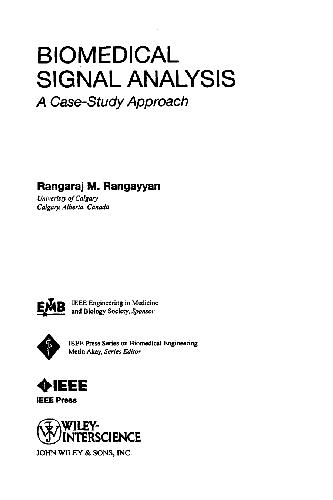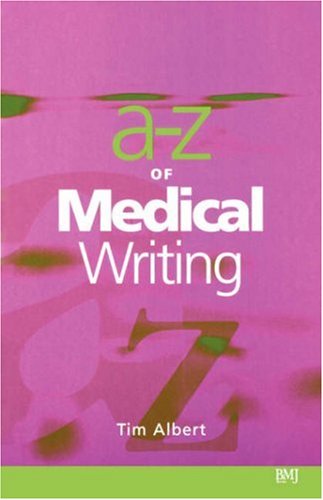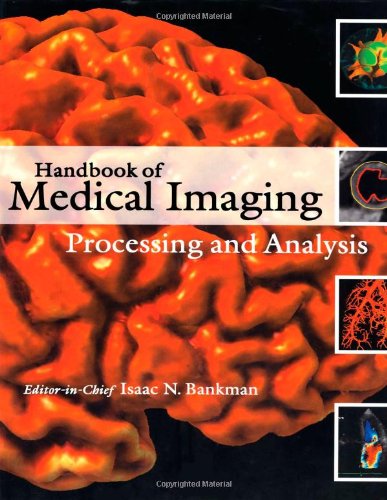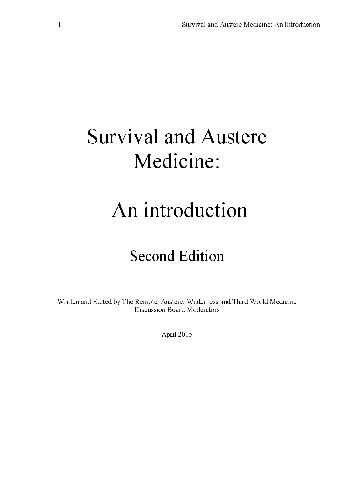Rangaraj M Rangayyan,Knovel (Firm)9781601195708, 1601195702
Table of contents :
Front Matter……Page 1
Index……Page 0
Background and Motivation……Page 3
Intended Readership……Page 5
Teaching and Learning Plan……Page 6
Table of Contents……Page 8
Table of Contents……Page 16
1.1 The Nature of Biomedical Signals……Page 24
1.2.1.1 Resting Potential……Page 28
1.2.1.3 Repolarization……Page 29
1.2.2 The Electroneurogram (ENG)……Page 32
1.2.3 The Electromyogram (EMG)……Page 34
1.2.4 The Electrocardiogram (ECG)……Page 37
1.2.4.1 The Heart……Page 41
1.2.4.2 The Electrical System of the Heart……Page 42
1.2.4.3 ECG Signal Acquisition……Page 45
1.2.5 The Electroencephalogram (EEG)……Page 51
1.2.6 Event-Related Potentials (ERPs)……Page 53
1.2.7 The Electrogastrogram (EGG)……Page 54
1.2.8.1 The Genesis of Heart Sounds……Page 57
1.2.8.2 Heart Murmurs……Page 60
1.2.9 The Carotid Pulse (CP)……Page 61
1.2.11 The Speech Signal……Page 63
1.2.13.1 The Knee Joint……Page 69
1.2.13.3 Knee-Joint Disorders……Page 70
1.3 Objectives of Biomedical Signal Analysis……Page 71
1.3.2 Active versus Passive Procedures……Page 73
1.3.3 The Human – Instrument System……Page 74
1.4.1 Accessibility of the Variables to Measurement……Page 75
1.4.3 Inter-Relationships and Interactions among Physiological Systems……Page 76
1.4.5 Physiological Artifacts and Interference……Page 77
1.5 Computer-Aided Diagnosis……Page 78
1.6 Remarks……Page 80
1.7 Study Questions and Problems……Page 81
1.8 Laboratory Exercises and Projects……Page 82
2. Analysis of Concurrent, Coupled, and Correlated Processes……Page 83
2.2.1.2 Solution……Page 84
2.2.2 The Phonocardiogram and the Carotid Pulse……Page 85
2.2.3.2 Solution……Page 86
2.2.4 Cardio-Respiratory Interaction……Page 88
2.2.6 The Knee-Joint and Muscle Vibration Signals……Page 89
2.3 Application: Segmentation of the PCG into Systolic and Diastolic Parts……Page 91
2.6 Laboratory Exercises and Projects……Page 93
3.1 Problem Statement……Page 94
3.1.1 Random Noise, Structured Noise, and Physiological Interference……Page 95
3.1.1.2 Random Noise……Page 96
3.1.1.4 Time Averages……Page 99
3.1.1.6 Structured Noise……Page 101
3.1.2 Stationary versus Nonstationary Processes……Page 102
3.2.2 High-Frequency Noise in the ECG……Page 106
3.2.4 Power-Line Interference in ECG Signals……Page 108
3.2.5 Maternal Interference in Fetal ECG……Page 111
3.2.6 Muscle-Contraction Interference in VAG Signals……Page 112
3.3 Time-Domain Filters……Page 114
3.3.1 Synchronized Averaging……Page 115
3.3.1.1 Illustration of Application……Page 116
3.3.2 Moving-Average Filters……Page 120
3.3.2.1 Relationship of Moving-Average Filtering to Integration……Page 125
3.3.2.2 Illustration of Application……Page 127
3.3.3 Derivative-Based Operators to Remove Low-Frequency Artifacts……Page 130
3.3.3.1 Illustration of Application……Page 132
3.4 Frequency-Domain Filters……Page 136
3.4.1 Removal of High-Frequency Noise: Butterworth Lowpass Filters……Page 139
3.4.1.1 Butterworth Lowpass Filter Design Example……Page 143
3.4.1.2 Illustration of Application……Page 145
3.4.2 Removal of Low-Frequency Noise: Butterworth Highpass Filters……Page 148
3.4.3 Removal of Periodic Artifacts: Notch and Comb Filters……Page 151
3.4.3.2 Comb Filter Design Example……Page 154
3.4.3.3 Illustration of Application……Page 156
3.5 Optimal Filtering: The Wiener Filter……Page 158
3.5.1 Illustration of Application……Page 165
3.6 Adaptive Filters for Removal of Interference……Page 167
3.6.1 The Adaptive Noise Canceler……Page 168
3.6.2.1 Illustration of Application……Page 171
3.6.3 The Recursive Least-Squares Adaptive Filter……Page 172
3.6.3.1 Illustration of Application……Page 177
3.7 Selecting an Appropriate Filter……Page 179
3.8 Application: Removal of Artifacts in the ECG……Page 183
3.9 Application: Adaptive Cancellation of the Maternal ECG to Obtain the Fetal ECG……Page 186
3.10 Application: Adaptive Cancellation of Muscle-Contraction Interference in Knee Joint Vibration Signals……Page 187
3.12 Study Questions and Problems……Page 192
3.13 Laboratory Exercises and Projects……Page 196
4.1 Problem Statement……Page 198
4.2.1 The P, QRS, and T Waves in the ECG……Page 199
4.2.2 The First and Second Heart Sounds……Page 200
4.2.4 EEG Rhythms, Waves, and Transients……Page 201
4.3 Detection of Events and Waves……Page 203
4.3.1.1 Illustration of Application……Page 204
4.3.1.2 Illustration of Application……Page 207
4.3.2.2 Highpass Filter……Page 208
4.3.2.6 Adaptive Thresholding……Page 209
4.3.2.7 Searchback Procedure……Page 210
4.3.2.8 Illustration of Application……Page 211
4.4 Correlation Analysis of EEG Channels……Page 212
4.4.1 Detection of EEG Rhythms……Page 214
4.4.1.1 Illustration of Application……Page 215
4.5.1 Coherence Analysis of EEG Channels……Page 221
4.5.1.1 Illustration of Application……Page 224
4.6.1 Detection of EEG Spike-and-Wave Complexes……Page 225
4.7 Detection of the P Wave……Page 226
4.8.1 Generalized Linear Filtering……Page 233
4.8.2 Homomorphic Deconvolution……Page 234
4.8.3.1 The Complex Cepstrum……Page 237
4.8.3.2 Effect of Echoes or Repetitions of a Wavelet……Page 239
4.8.3.3 The Power Cepstrum……Page 241
4.8.3.4 Illustration of Application……Page 242
4.9 Application: ECG Rhythm Analysis……Page 243
4.10 Application: Identification of Heart Sounds……Page 246
4.11 Application: Detection of the Aortic Component of the Second Heart Sound……Page 248
4.12 Remarks……Page 252
4.13 Study Questions and Problems……Page 254
4.14 Laboratory Exercises and Projects……Page 255
5.1 Problem Statement……Page 257
5.2.3 Ectopic Beats……Page 258
5.2.5 PCG Intensity Patterns……Page 259
5.4.1 Correlation Coefficient……Page 260
5.4.2 The Minimum-Phase Correspondent and Signal Length……Page 261
5.4.2.2 Minimum-Phase and Maximum-Phase Components……Page 262
5.4.2.3 The Minimum-Phase Correspondent (MPC)……Page 263
5.4.2.5 Illustration of Application……Page 264
5.4.3 ECG Waveform Analysis……Page 268
5.5 Envelope Extraction and Analysis……Page 269
5.5.1 Amplitude Demodulation……Page 271
5.5.2 Synchronized Averaging of PCG Envelopes……Page 272
5.5.3.1 Illustration of Application……Page 275
5.6 Analysis of Activity……Page 276
5.6.2 Zero-Crossing Rate……Page 279
5.6.3.1 Illustration of Application……Page 280
5.6.4 Form Factor……Page 282
5.7 Application: Parameterization of Normal and Ectopic ECG Beats……Page 283
5.8 Application: Analysis of Exercise ECG……Page 285
5.9 Application: Analysis of Respiration……Page 286
5.11 Remarks……Page 289
5.12 Study Questions and Problems……Page 292
5.13 Laboratory Exercises and Projects……Page 294
6. Frequency-Domain Characterizition of Signals and Systems……Page 296
6.1 Problem Statement……Page 297
6.2.1 The Effect of Myocardial Elasticity on Heart Sound Spectra……Page 298
6.2.2 Frequency Analysis of Murmurs to Diagnose Valvular Defects……Page 299
6.3 The Fourier Spectrum……Page 301
6.4 Estimation of the Power Spectral Density Function……Page 306
6.4.1 The Periodogram……Page 307
6.4.2 The Need for Averaging……Page 308
6.4.3 The Use of Windows: Spectral Resolution and Leakage……Page 310
6.4.3.1 Illustration of Application……Page 314
6.4.4 Estimation of the Autocorrelation Function……Page 316
6.4.5 Synchronized Averaging of PCG Spectra……Page 317
6.5 Measures Derived from Power Spectral Density Functions……Page 321
6.5.1 Moments of PSD Functions……Page 324
6.5.2 Spectral Power Ratios……Page 326
6.6 Application: Evaluation of Prosthetic Heart Valves……Page 327
6.7 Remarks……Page 329
6.8 Study Questions and Problems……Page 330
6.9 Laboratory Exercises and Projects……Page 331
7.1 Problem Statement……Page 333
7.2.1 Motor-Unit Firing Patterns……Page 334
7.2.3 Formants and Pitch in Speech……Page 335
7.2.4 Patello-Femoral Crepitus……Page 337
7.3 Point Processes……Page 338
7.4 Parametric System Modeling……Page 345
7.5 Autoregressive or All-Pole Modeling……Page 351
7.5.1 Spectral Matching and Parameterization……Page 357
7.5.2 Optimal Model Order……Page 360
7.5.2.2 Illustration of Application to EEG Signals……Page 361
7.5.3 Relationship between AR and Cepstral Coefficients……Page 364
7.6 Pole-Zero Modeling……Page 373
7.6.1.1 Shanks’ Method……Page 376
7.6.2.3 The Steiglitz-McBride Method……Page 378
7.6.3.2 Solution……Page 384
7.6.3.3 Illustration of Application to a Synthetic Speech Signal……Page 385
7.6.3.4 Illustration of Application to a Real Speech Signal……Page 388
7.7.1 Sound Generation in Coronary Arteries……Page 389
7.7.2 Sound Generation in Knee Joints……Page 392
7.8 Application: Analysis of Heart-Rate Variability……Page 395
7.9 Application: Spectral Modeling and Analysis of PCG Signals……Page 398
7.11 Remarks……Page 404
7.12 Study Questions and Problems……Page 407
7.13 Laboratory Exercises and Projects……Page 408
8. Analysis of Nonstationary Signals……Page 409
8.2.1 Heart Sounds and Murmurs……Page 410
8.2.3 Articular Cartilage Damage and Knee-Joint Vibrations……Page 411
8.3 Time-Variant Systems……Page 414
8.3.1 Characterization of Nonstationary Signals and Dynamic Systems……Page 415
8.4 Fixed Segmentation……Page 417
8.4.1 The Short-Time Fourier Transform……Page 418
8.4.2 Considerations in Short-Time Analysis……Page 420
8.4.2.1 Illustration of Application……Page 422
8.5 Adaptive Segmentation……Page 423
8.5.1.1 Analysis of Spectral Change……Page 426
8.5.1.2 Algorithm for Adaptive Segmentation……Page 427
8.5.2 ACF Distance……Page 431
8.5.3 The Generalized Likelihood Ratio……Page 432
8.5.4 Comparative Analysis of the ACF, SEM, and GLR Methods……Page 434
8.6 Use of Adaptive Filters for Segmentation……Page 437
8.6.1 Monitoring the RLS Filter……Page 438
8.6.2.1 Forward and Backward Prediction……Page 439
8.6.2.2 The Burg-Lattice Method……Page 442
8.6.2.3 RLSL Algorithm for Adaptive Segmentation……Page 445
8.6.2.4 Illustration of Application……Page 448
8.7 Application: Adaptive Segmentation of EEG Signals……Page 449
8.9 Application: Time-Varying Analysis of Heart-Rate Variability……Page 456
8.12 Laboratory Exercises and Projects……Page 462
9. Pattern Classification and Diagnostic Decision……Page 463
9.2.1 Diagnosis of Bundle-Branch Block……Page 464
9.2.2 Normal or Ectopic ECG Beat?……Page 465
9.2.4 Is a Murmur Present?……Page 466
9.3 Pattern Classification……Page 467
9.4.1 Discriminant and Decision Functions……Page 468
9.4.2 Distance Functions……Page 469
9.4.3 The Nearest-Neighbor Rule……Page 470
9.5.1 Cluster-Seeking Methods……Page 471
9.5.1.1 A Simple Cluster-Seeking Algorithm……Page 473
9.5.1.3 The K-Means Algorithm……Page 474
9.6.1 Likelihood Functions and Statistical Decision……Page 475
9.6.2 Bayes Classifier for Normal Patterns……Page 478
9.7 Logistic Regression Analysis……Page 480
9.8.1 The Leave-One-Out Method……Page 481
9.9 Neural Networks……Page 482
9.10 Measures of Diagnostic Accuracy and Cost……Page 484
9.10.1 Receiver Operating Characteristics……Page 487
9.10.2 McNemar’s Test of Symmetry……Page 490
9.11 Reliability of Classifiers and Decisions……Page 491
9.12 Application: Normal versus Ectopic ECG Beats……Page 492
9.13 Application: Detection of Knee-Joint Cartilage Pathology……Page 498
9.14 Remarks……Page 501
9.15 Study Questions and Problems……Page 503
9.16 Laboratory Exercises and Projects……Page 505
About the Author……Page 506
Acknowledgments……Page 508
Dedication……Page 511
B……Page 512
C……Page 513
D……Page 515
E……Page 516
F……Page 520
H……Page 522
K……Page 523
M……Page 524
N……Page 526
P……Page 527
S……Page 531
V……Page 534
W……Page 535
Z……Page 536
References……Page 537
Symbols and Abbreviations……Page 557







Reviews
There are no reviews yet.